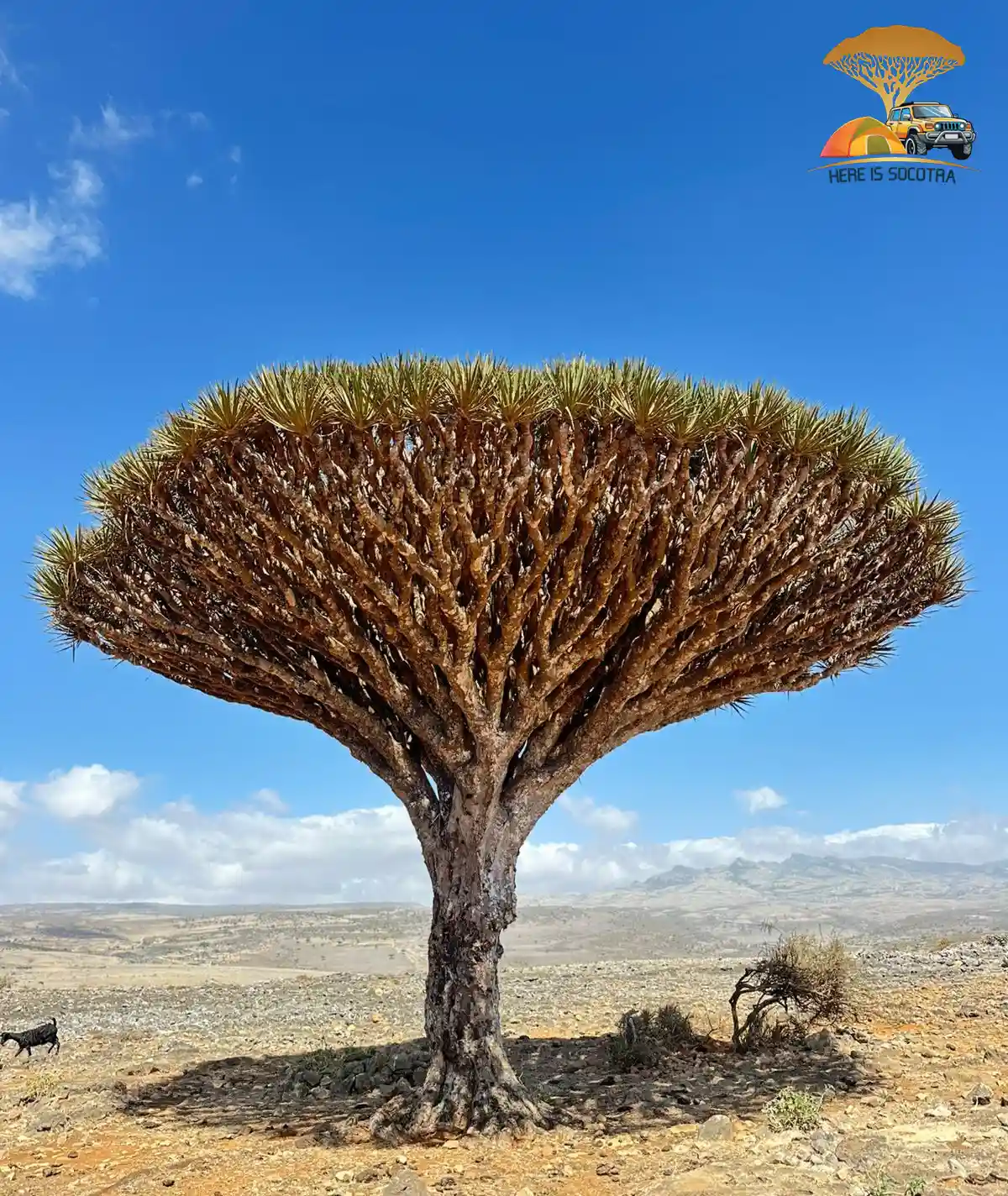
Introduction to the Island
Located in the Indian Ocean off the coast of Yemen, it is nicknamed “the most exotic island in the world” due to its isolation and unique biodiversity. Thanks to its diverse environment and stunning natural beauty, Socotra is one of the most unique destinations in the world. Whether you’re looking for adventure or relaxation, the island offers everything you need for a perfect vacation.
Name of the island
Socotra is the local name for this island, as mentioned by ancient historians. Researchers have delved into the origins of the name, which comes from the ancient Indian Sanskrit word meaning “island of happiness.”
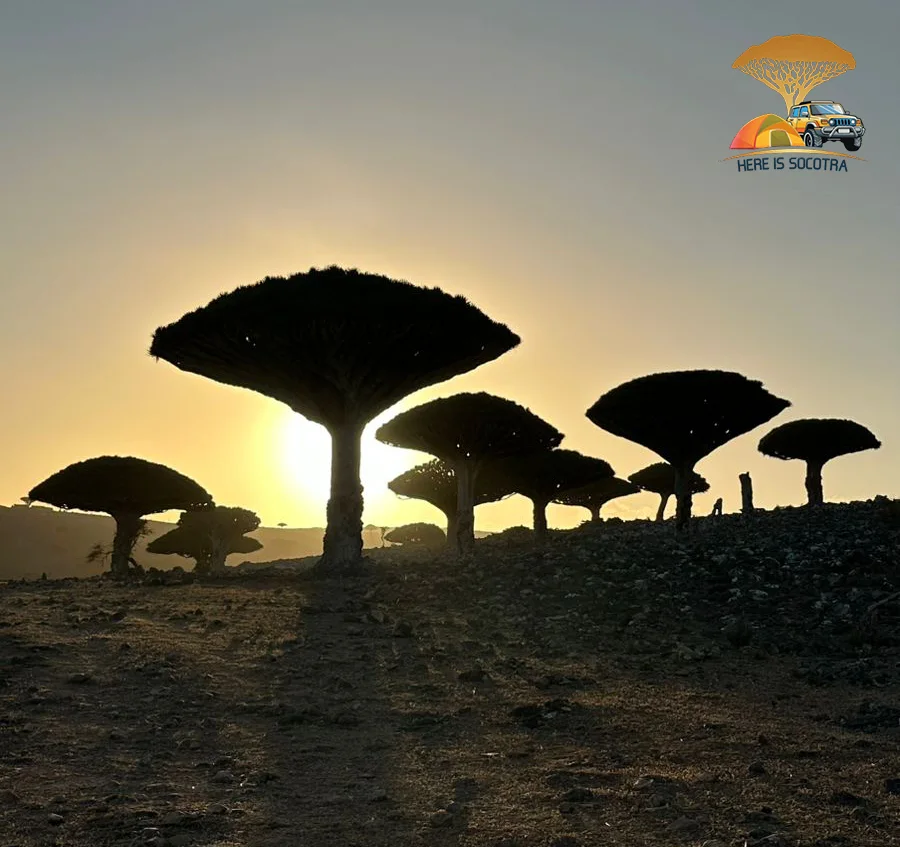
Unique plants
such as the Dragon’s Blood Tree (the island’s symbol), and the Socotra Frankincense Tree, the most important habitat for frankincense trees famous in ancient times. Nine species of frankincense trees are found on the island, out of 25 species in the world. Approximately (850) plant species have been recorded on the island, of which approximately 270 are endemic to the island and found nowhere else in the world
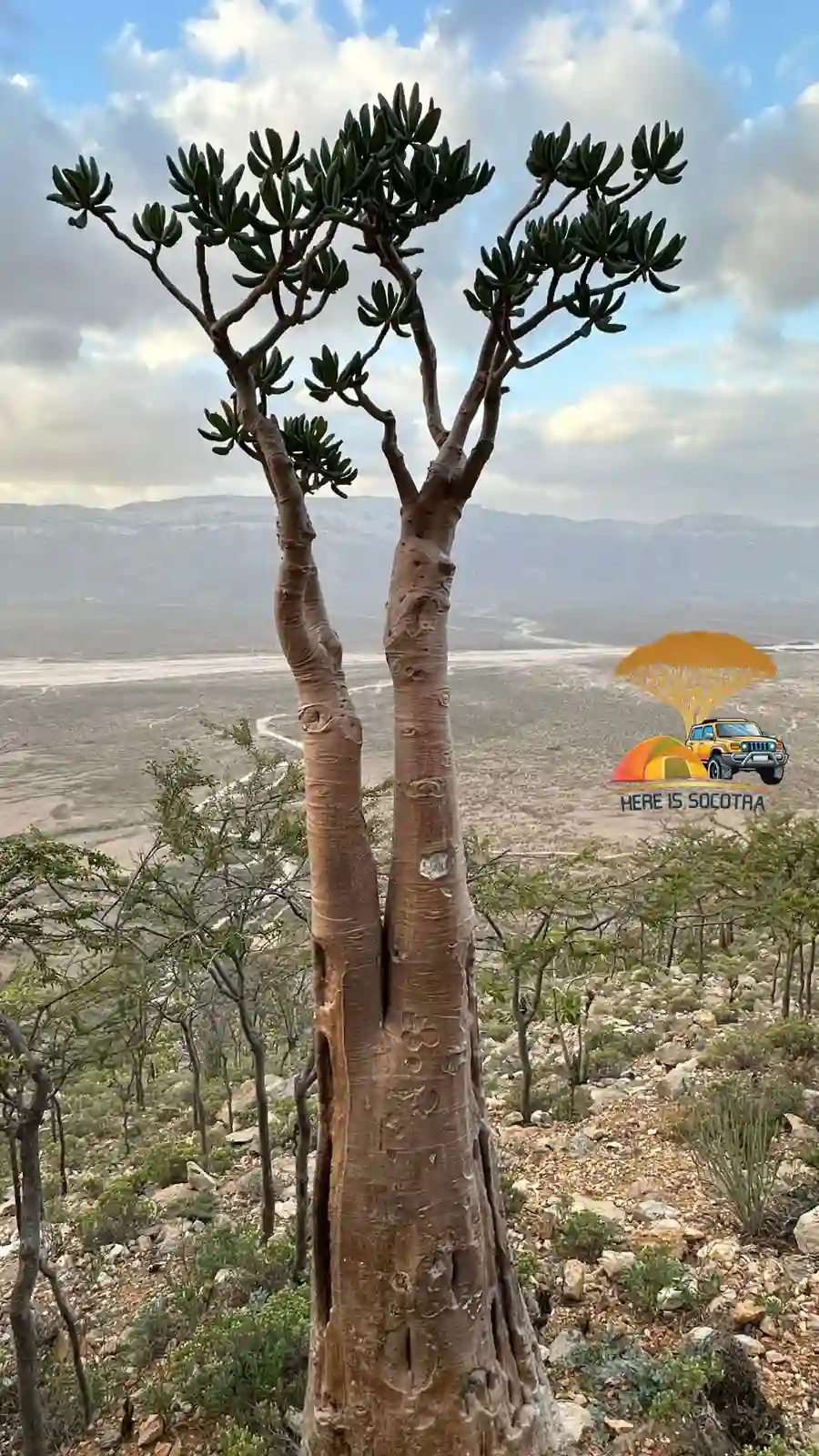

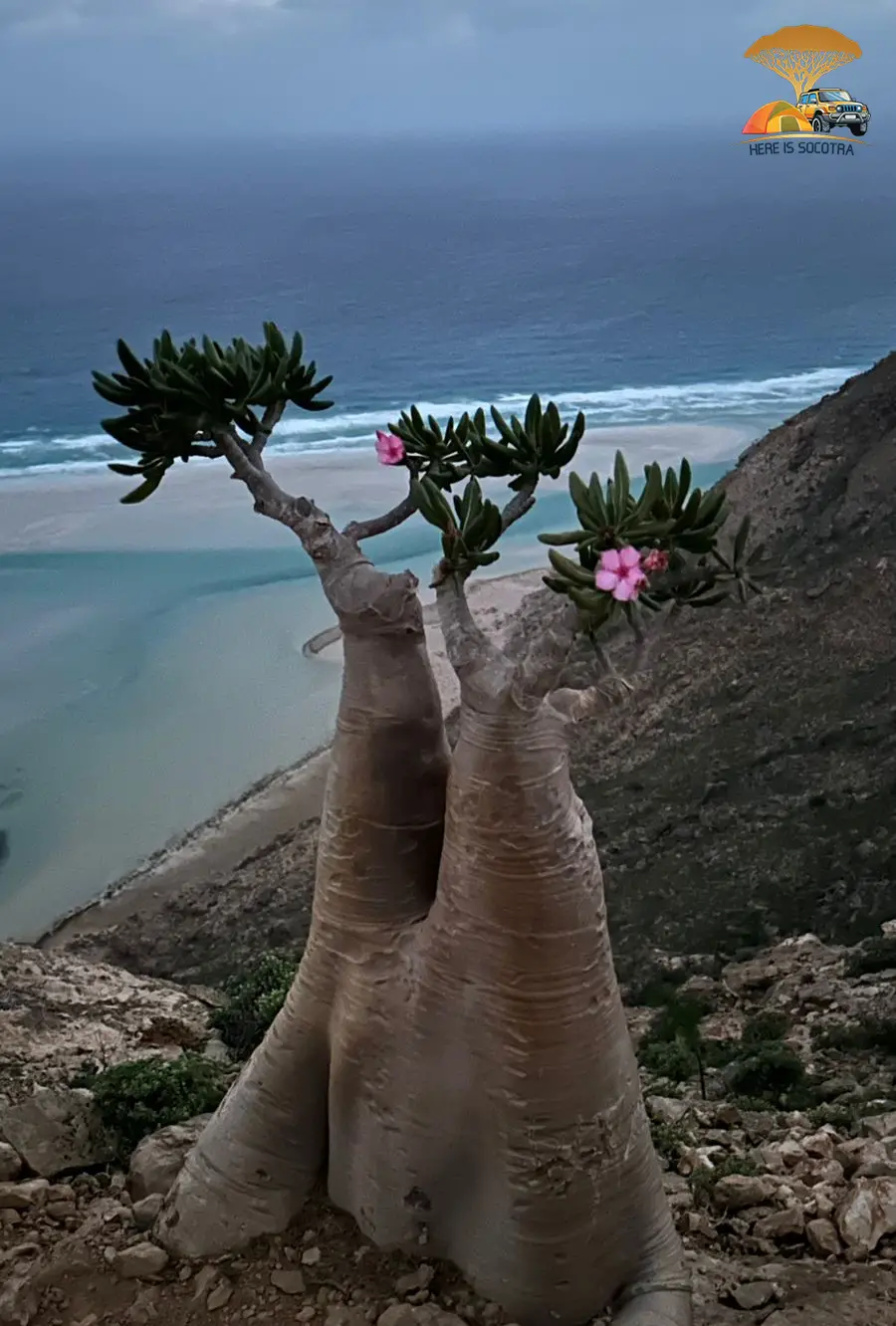
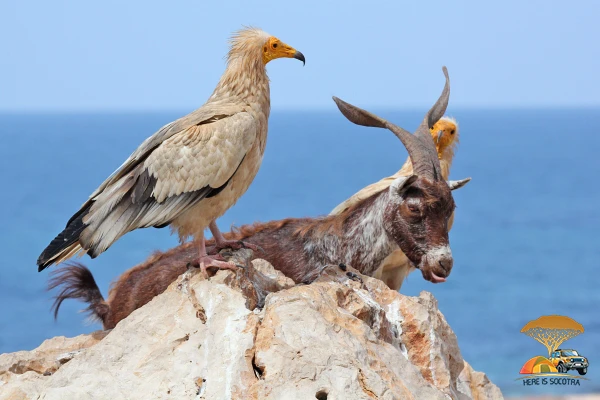
Rare Animals
90% of the reptiles found here are found nowhere else, such as the Socotra Golden Lizard.

Amazing Birds
Socotra is a natural habitat for many birds, with six endemic bird species found nowhere else in the world. Among the most famous birds on the island are the Socotra Buzzard, the African Blackbird (Dafhan), the Pipit (Kaskas), the Warbler, and the extremely fearful and shy Socotra Warbler, in addition to seagulls, the Socotra Pelican, and others.
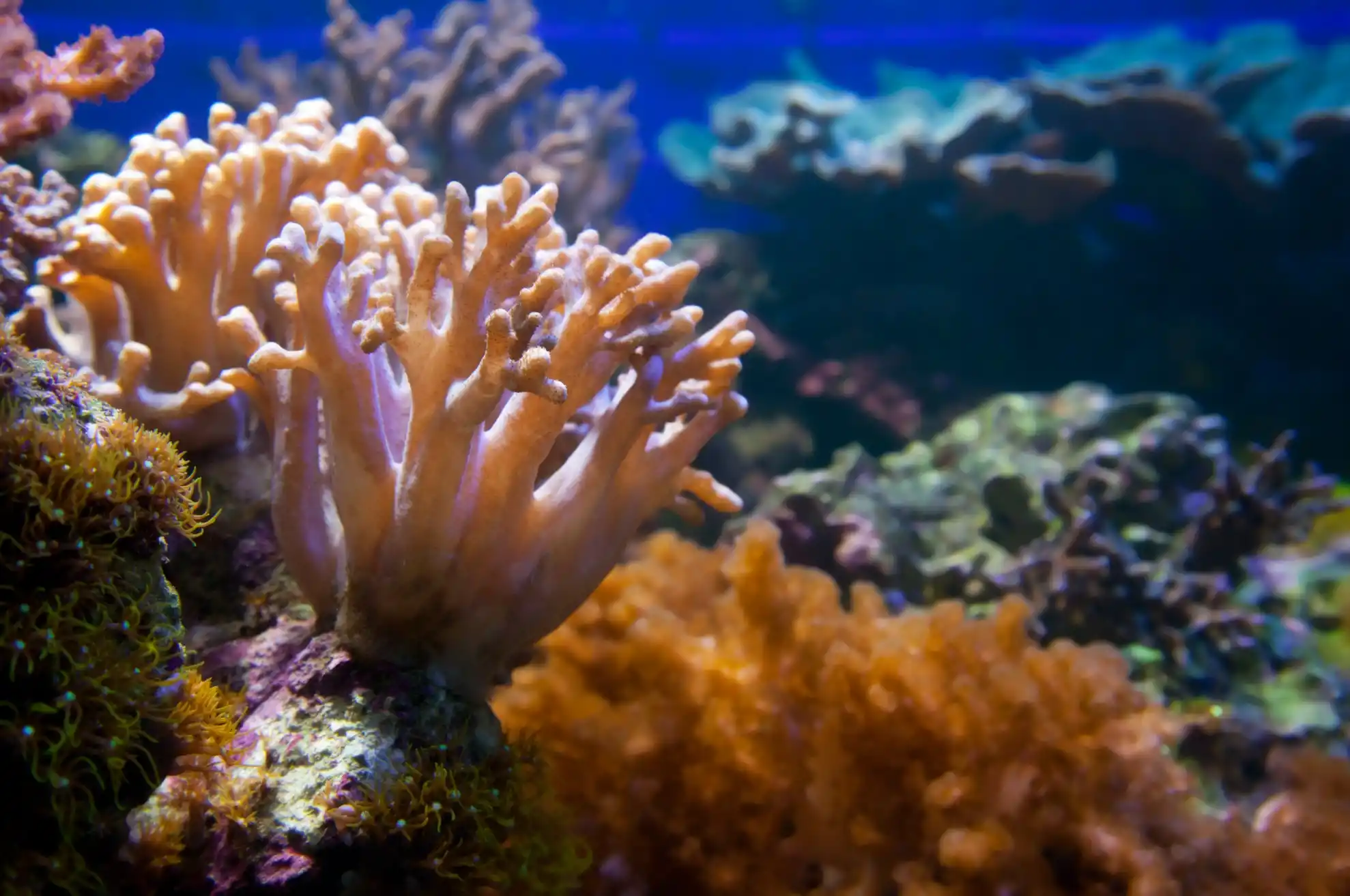
Stunning coral reefs
They adorn the seabed with their enchanting colors, and there are 352 species of reef-building coral.
Natural Landscapes
Lofty mountains:
such as the Hajhar Mountains, which offer panoramic views. There are several other mountains, the most important of which are the Falaj Mountains to the east, whose highest peak is 640 meters, and the Qawl Mountains to the southwest.
valleys
Socotra Island has a large number of valleys, which take various paths and directions depending on the surface influences. These include Wadi Danjan, Wadi Hashra, Wadi Daniya, Wadi Darab’a, and Wadi Tu’aq.

